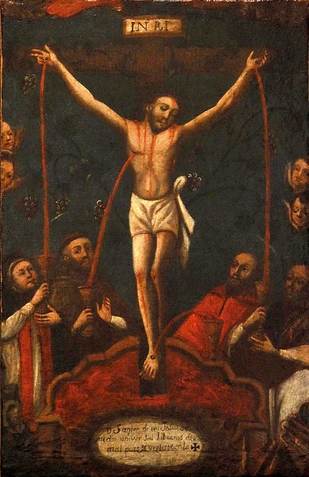Just Asking

The Instruction Redemptionis Sacramentum, On certain matters to be observed or to be avoided regarding the Most Holy Eucharist, was promulgated by the Congregation for Divine Worship and the Discipline of the Sacraments six years ago on 25 March 2004.
Has this Instruction been the subject of study?
Has it been presented to priests and deacons as the subject of ongoing formation?
Are parish priests aware of its implications?
Has it been presented in parish bulletins?
Here is part of what the document says concerning Communion under both kinds:
4. Communion under Both Kinds
[100.] So that the fullness of the sign may be made more clearly evident to the faithful in the course of the Eucharistic banquet, lay members of Christ’s faithful, too, are admitted to Communion under both kinds, in the cases set forth in the liturgical books, preceded and continually accompanied by proper catechesis regarding the dogmatic principles on this matter laid down by the Ecumenical Council of Trent.[186]
Hmmm: “Preceded and continually accompanied by proper catechesis regarding the dogmatic principles on this matter laid down by the Ecumenical Council of Trent.” Coming soon to a parish near you?

[101.] In order for Holy Communion under both kinds to be administered to the lay members of Christ’s faithful, due consideration should be given to the circumstances, as judged first of all by the diocesan Bishop. It is to be completely excluded where even a small danger exists of the sacred species being profaned. With a view to wider co-ordination, the Bishops’ Conferences should issue norms, once their decisions have received the recognitio of the Apostolic See through the Congregation for Divine Worship and the Discipline of the Sacraments, especially as regards “the manner of distributing Holy Communion to the faithful under both kinds, and the faculty for its extension.”
Completed excluded where even a small danger exists of the sacred species being profaned? If, in fact, accidents have occurred during the distribution of the Precious Blood, this principle must be considered seriously.
[102.] The chalice should not be ministered to lay members of Christ’s faithful where there is such a large number of communicants that it is difficult to gauge the amount of wine for the Eucharist and there is a danger that “more than a reasonable quantity of the Blood of Christ remain to be consumed at the end of the celebration”. The same is true wherever access to the chalice would be difficult to arrange, or where such a large amount of wine would be required that its certain provenance and quality could only be known with difficulty, or wherever there is not an adequate number of sacred ministers or extraordinary ministers of Holy Communion with proper formation, or where a notable part of the people continues to prefer not to approach the chalice for various reasons, so that the sign of unity would in some sense be negated.
Are large parish Masses on Sunday suitable occasions for the administration of the chalice?
[103.] The norms of the Roman Missal admit the principle that in cases where Communion is administered under both kinds, “the Blood of the Lord may be received either by drinking from the chalice directly, or by intinction, or by means of a tube or a spoon”. As regards the administering of Communion to lay members of Christ’s faithful, the Bishops may exclude Communion with the tube or the spoon where this is not the local custom, though the option of administering Communion by intinction always remains. If this modality is employed, however, hosts should be used which are neither too thin nor too small, and the communicant should receive the Sacrament from the Priest only on the tongue.
This article needs to be read in the light of Sacramentali Communione (1970) which states:
Otherwise the preference should be for the rite of communion under both kinds by intinction: it is more likely to obviate the practical difficulties and to ensure the reverence due the sacrament more effectively. Intinction makes access to communion under both kinds easier and safer for the faithful of all ages and conditions; at the same time it preserves the truth present in the more complete sign.
[104.] The communicant must not be permitted to intinct the host himself in the chalice, nor to receive the intincted host in the hand. As for the host to be used for the intinction, it should be made of valid matter, also consecrated; it is altogether forbidden to use non-consecrated bread or other matter.

Dear Father Mark,
When RS was promulgated in 2004, I was still an active member of my local Novus Ordo parish. In fact, I was member of the Liturgical Committee.
I would always do my best to softly and gently urge orthodoxy and reverence in all our celebrations. When RS came out, I pointed out it was incumbent on us to implement it thoroughly.
That was in the spring, before our summer break. When fall came, I found that the rules of committee membership had been changed to keep me from the table – you now had to be a parish employee to be a member. That’s when the family left our parish altogether, and began attending the TLM thirty miles away.
I’m afraid that’s still the attitude of so many parishes regarding RS. Full implementation, even now, would mean a dying to self, and an acknowledgment that Liturgy has absolutely nothing to do with egalitarian sentiments of the right or left; very hard things for American Catholics in particular to come to terms with. The French Revolution and JFK’s West Virginia speech have done their job.
Although my family and I now choose to attend the Extraordinary Form, as the Sacrifice is re-presented, and Christ is present, it’s important for the whole Church that the Novus Ordo be celebrated in as reverent and holy a manner as possible.
This is why I’m praying earnestly that Redemptionis Sacramentum at the very least appear in the front of every copy of the new translation edition of the Third Missal.
Rev. Father’s comments seem to prove the point that there is not enough time, nor the desired effort, to “reform” the Ordinary Form of Holy Mass. Seemingly, the most reasonable and viable way to restore Honor and Dignity to the Sacred Liturgy is a widespread return to the Extraordinary Form of Holy Mass, which will, in effect, swiftly remove the many and entrenched abuses (now considered “norms” by most).
Dear Father Mark,
Thank you for that amazing and literally, heart-breaking, painting of the crucified and bleeding Christ. So appropriate, and so true!
Unfortunately so many, most especially those who are constantly involved with liturgical “planning” or involved with any liturgical “ministry” be it real, exaggerated, abused or conjured-up, can become so easily desensitized when simple “liturgy” becomes mundane and only something to be prepared or carried out, even to accidents with the Sacred Species Which is stripped of Its true Identity, giving place to “bread” and “wine,” accidents which often happen on a regular basis.
Redemptionis Sacramentum still has not been studied or implemented in my considerably-large diocese, except by one beloved priest (RIP) who humbly and joyfully accepted the document and changed the parish Masses immediately. God reward him. When we have more dedicated, more obedient, and more reverent bishops like Bishop Slattery in our dioceses, then we will also see the restoration of the Sacred Liturgy on a large-scale. Until then, brick-by-brick…
Thank you, Fr. Mark, for this thoughtful article. If the Eucharist is indeed the source and summit of our lives, it deserves every reverence, every care, and all the attention we can possibly give.
When I came into the Catholic Church after years among the Eastern Orthodox, I was dismayed by the casual reception of Communion. Twenty years later, I’m still dismayed.
“Trent??? Father Feely, he said the ‘T-word’!!!”
Sorry, couldn’t resist. VERY intelligent and well-put post, Father.
Very informative post.
I have thought for some time now that the proper/liturgical role of the deacon could be highlighted in BOTH forms of the Roman rite with regards to Communion. If there is to be Communion under both species, then I don’t see why the deacon, for example could not, for example, hold the chalice along with some sort of cloth (such as used in the Byzantine rites).
Sadly, in quite a few parishes in my city, self-intinction is a common practice (even encouraged by our previous bishop); no one seems to care much for what “Rome” says.